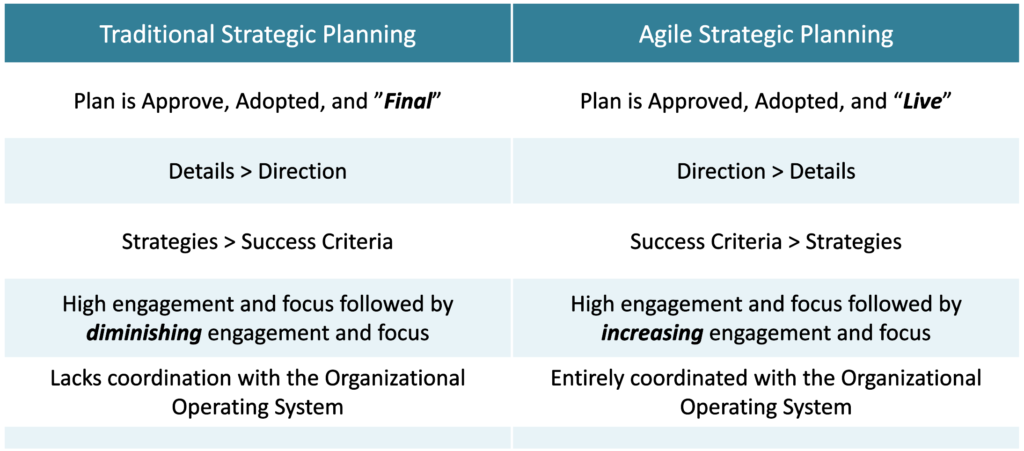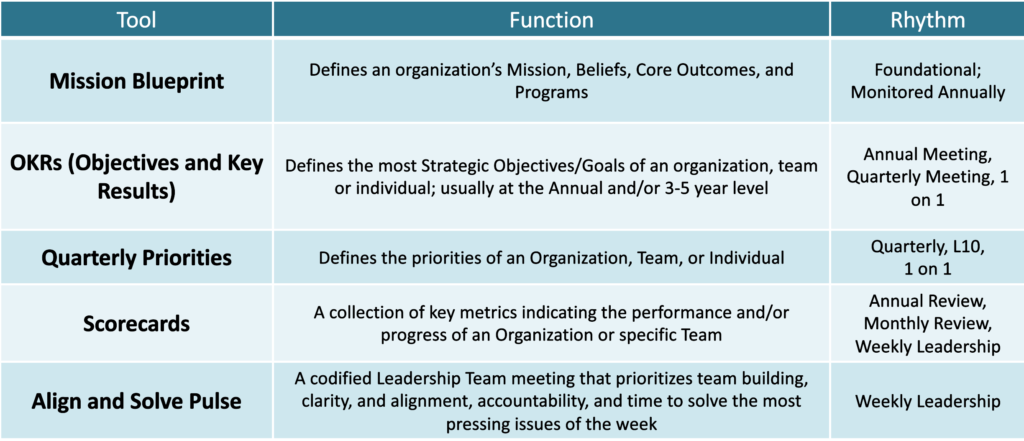Strategy Fatigue
Last year we started a new engagement with a client helping them to develop a 5-year strategic plan. In our second meeting with the board committee who was charged with steering the project to completion, one of the board members said, “I have to tell you, I don’t have much faith that this process is going to help us.” We were a bit stunned by the brute honesty, but we asked him to share why he felt that way. He went on to say that he had been through dozens of similar processes at various nonprofits he supported, and that they all consumed a ton of valuable time but rarely resulted in plans that were actually achieved.
I can relate. In the early 2000’s I worked at on organization that spent an entire year creating a plan. By the time it was completed, most of the year-1 goals were irrelevant. As the executive team rolled out the 50 page, 5-year plan, it felt completely out of touch. They shared the vision but didn’t offer much in how it would be achieved. In fact, many of us weren’t even aware there was a planning process that was going on until it was complete. As you can imagine there wasn’t a lot of buy-in or excitement for the plan.
Traditional planning vs Agile, Strategic Integration
It doesn’t have to be this way. Crafting a compelling vision and strategic plan is still essential as long as they are paired with the tools and resources needed to implement them. Great visions and plans need an operating system to create a framework in which they are realized. Otherwise, you just have a season of intense planning that results in a mountain-top experience that quickly dissipates as soon as the planning phase is complete. Consider the two images below- the mountain-top image on the left represents traditional strategic planning. The loop on the right represents Strategic Integration- ongoing planning that is always learning and ever adapting. Traditional strategic planning doesn’t emphasize the need of an operating system. Strategic integration offers the framework for the plan to be completed.

Some think taking the time to craft a clear and compelling vision is a waste of time- that the return on the investment of time simply isn’t worth it. That’s only true if you haven’t adopted shared beliefs, rhythms and tools on how the vision will be accomplished. Sure, a fancy vision statement alone isn’t worth much, but creating a picture of the future you want to create is still critical. Everyone still needs to be directionally aligned and inspired by the potential of what you are working towards. The problem is that the mountain-top, once every 5-year process, often doesn’t offer a path to get there. It just points to spot far down the road and says a hope and a prayer to get there. Strategic integration acknowledges that working toward the vision is a process of ever-planning and ever-learning. Rather than a once every 5-year process, strategic integration consists of annual plans, quarterly priorities and weekly tools and rhythms that allow for real-time adjustments as the world around you demands it.
The key differences between Agile, Integrated Strategic planning and Traditional Strategic planning are shown below. The biggest difference is that Agile, integrated planning has an operating system. It consists of simple tenets, rhythms and tools that equip the organization to achieve the vision. And we can’t overstate the importance of simplicity. These rhythms and tools must be simple for them to stick and create new habits in your organization.

Essential Operating System Tools:
These simple tools (below), if implemented, equip teams to stay focused on their mission and vision, while breaking their biggest 5-year goals down into progress that can measured every week, month and quarter. If implemented correctly, they leave nothing to doubt. Defining the handful of measurable outcomes that work to demonstrate impact as well as a clear criterion of success for each long-term goal works to ensure alignment of effort toward the desired results.

The combination of a compelling vision and an adopted operating system can truly liberate an organization. Imagine a culture that had clarity in where it is headed AND everyone in the organization is using an operating system that equips them to get there. Imagine a culture where people are both excited about a compelling vision that stretched what they thought was possible, while simultaneously believing they could reach it. Balancing compelling vision with supportive rhythms and tools can go a long way toward people feeling a deep sense of purpose and engagement every day, as opposed just once every 5 years. It can lead to a liberating culture that empowers organizations to reach their potential.
